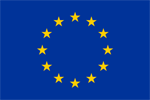E-learning in the Time of COVID-19
Scientific Editor Eugenia Smyrnova-Trybulska
“E-learning”, 13, Katowice–Cieszyn 2021, pp. 266–277
https://doi.org/10.34916/el.2021.13.22
ON THE USE OF SOCIAL NETWORKS IN TEACHERS’ CAREER GUIDANCE ACTIVITIES
Mariia Ostroha 1, Marina Drushlyak 2, Inna Shyshenko 3, Olha Naboka 4, Volodymyr Proshkin 5, & Olena Semenikhina 6
1, 2, 3, 6 Makarenko Sumy State Pedagogical University, Romenska str, 87, Sumy, Ukraine 4 Donbas State Pedagogical University, Henerala Batyuka St. 19, Sloviansk, Ukraine 5 Borys Grinchenko Kyiv University, Bulvarno-Kudriavska St. 18/2, Kyiv, Ukraine 1 mariia.ostroha@gmail.com, ORCID 0000-0003-0044-8801
2 marydru@fizmatsspu.sumy.ua, ORCID 0000-0002-9648-2248
3 shiinna@ukr.net, ORCID 0000-0002-1026-5315
4 olganaboka911@gmail.com, ORCID 0000-0003-4635-0009
5 v.proshkin@kubg.edu.ua, ORCID 0000-0002-9785-0612
6 e.semenikhina@fizmatsspu.sumy.ua, ORCID 0000-0002-3896-8151
Abstract: The article reveals the essence of professional orientation as a system of interaction between a young person and a educator (teacher, teaching staff, society), which is aimed at meeting the needs of the person in professional self-determination. The authors make a content analysis of Internet sources to identify resources that can be used to support career guidance activities and present a classification of Internet resources by types of career guidance work: diagnostic (online testing), agitation (university and interested institution sites), advisory (career guidance sites, network services), information and orientation (professions directories, job sites), accompanying (support development software), organizational (chats, e-platforms for communication), and by types of career guidance activities: sites for meetings (network services), for immersion (specialized software), for consulting (online tests, career guidance sites), for excursions (institution sites), for projects (educational resources). Emphasis is placed on social networks and possibilities of their use in career guidance activities due to the large number of users, the informal nature of communication within the network, which is more interactive (almost one-time exchange of ideas and resources). The practical state of teachers’ readiness to use social networks in career guidance was studied and it was found that despite the 100% inclusion of pre-service and service teachers in social networks, their readi- ness to involve them in career guidance is insufficient.
Keywords: career guidance, career guidance activities, professional self-determi- nation, social networks, digital technologies, teachers’ career guidance activities.
REFERENCES
B o y d, D.M. & E l l i s o n, N.B. (2017). Social Network Sites: Definition, History, and Scholar- ship. Journal of Computer-Mediated Communication, 13(1), 210–230. https://doi.org/10. 1111/j.1083-6101.2007.00393.x.
H e n r y, A.L. (1973). Teachers Role in Career Guidance. Agricultural Education, 45(8), 185–&. H o l m a n, J. (2014). Good Career Guidance. London: Gatsby Charitable Foundation.
H u t c h i n s o n, J. (2013). School organisation and STEM career related learning. York: Na- tional STEM Centre.
L i a s h c h e n k o, M.Ia. & H o l o v a n, M.S. (1996). Chyselni metody: Pidruchnyk [Numerical methods: Textbook]. Kyiv: Lybid.
M o d i b a, M.R. & S e f o t h o, M.M. (2019). Life orientation teacher training needs in career guidance at rural high schools. South African Journal of Education, 39(2), S1–S8. https:// doi.org/10.15700/saje.v39ns2a1538.
M u n r o, M. & E l s o m, D. (1999). Choosing Science at 16: The influences of science teachers and careers advisers on student’s decisions about science subjects and science and techno- logy carers. Cambridge: CRAC.
O c h i a i, Y., S a t o h, Y., O k a m o t o, M., & K u n i m o t o, K. (1995). Teacher’s attitude to- wards students’ desire in a career guidance. Japanese Journal of Educational Psychology, 43(4), 445–454. https://doi.org/10.5926/jjep1953.43.4_445.
O s a d c h y i, V.V. (2005). Pedahohichni zasoby profesiinoho konsultuvannia molodi zaso- bamy Internet [Pedagogical means of professional counseling of young people by means of the Internet] (Candidate dissertation). Vinnytsia.
P h o k a n e, M.D. (2012). Educators’ and learners’ experiences of parental involvement in cre- ating a positive climate for the teaching of Life Orientation. (Doctoral dissertation). Pre- toria, South Africa: Univeristy of Pretoria. Retrieved from https://pdfs.semanticscholar. org/39b1/e40c57ea01f98d60147918e71f30da765540.pdf (accessed 29 August 2019).
P o n o m a r o v a, N.O. (2017). Hotovnist vchytelia informatyky do proforiientatsiinoi roboty na IT-spetsialnosti yak pedahohichna problema [The Readiness of Future Teacher of In- formatics to Career Guidance on IT- Specialty as a Pedagogical Problem]. Informatsiini tekhnolohii i zasoby navchannia [Information Technologies and Learning Tools], 59(3), 168–178. https://doi.org/10.33407/itlt.v59i3.1614.
W a t e r m e y e r, R., M o r t o n, P., & C o l l i n s, J. (2016). Rationalising for and against a pol- icy of school-led careers guidance in STEM in the UK: a teacher perspective. Interna- tional Journal of Science Education, 38(9), 1441–1458. https://doi.org/10.1080/09500693. 2016.1195520.
W o n g, L.P.W., Y u e n, M., & C h e n, G.W. (2021). Career-related teacher support: A review of roles that teachers play in supporting students’ career planning. Journal of Psycholo- gists and Counsellors in Schools, 31(1), 130–141. https://doi.org/10.1017/jgc.2020.30.
Z a v i t r e n k o, D.Zh. (2013). Formuvannia v maibutnikh vchyteliv tekhnolohii hotovnosti do profesiinoi oriientatsii uchniv osnovnoi shkoly [Formation of pre-service teachers’ technology of readiness for vocational guidance of primary school students] (Candidate dissertation). Kirovohrad.





